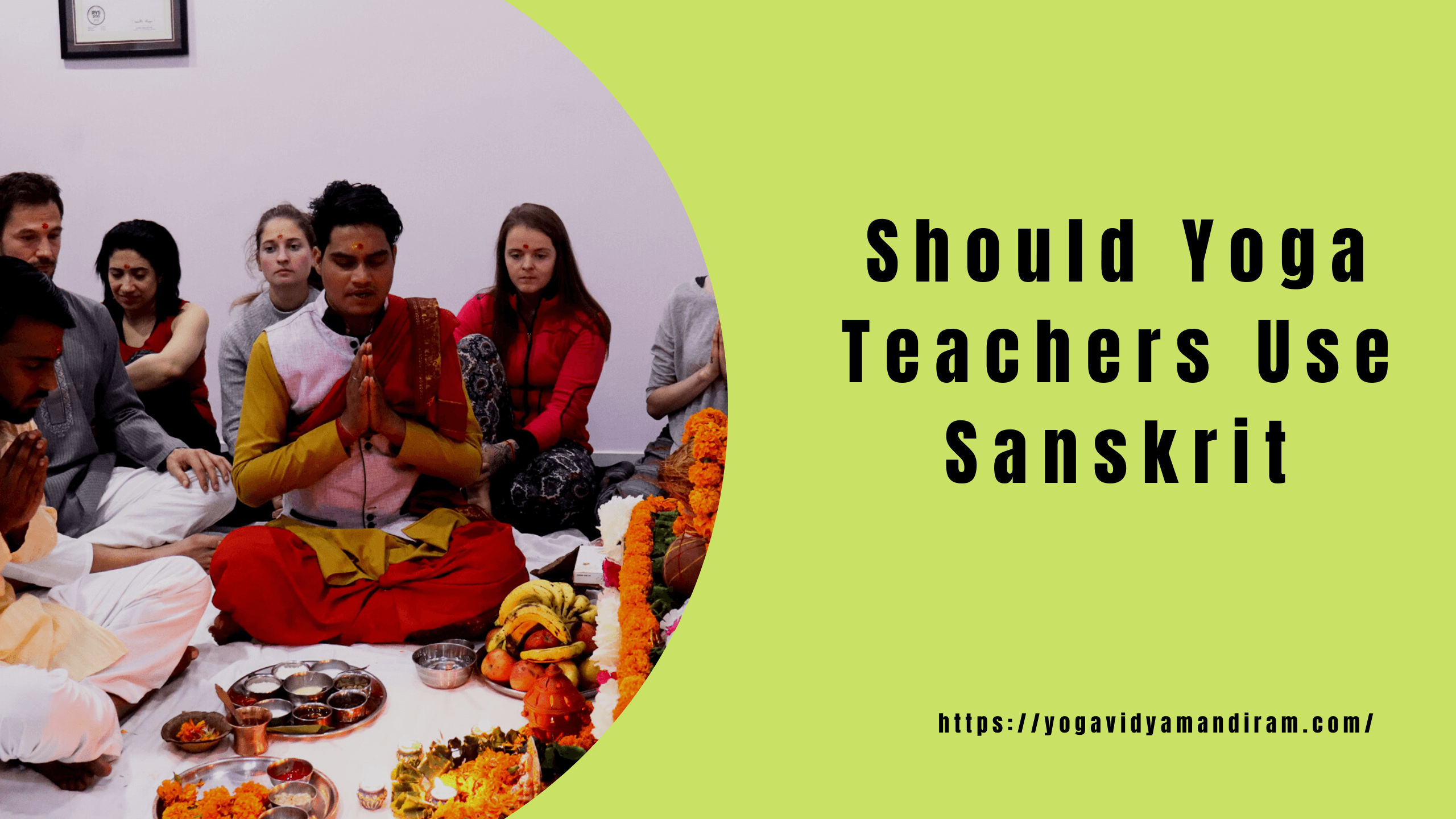Sanskrit is a very old language, and was used by the yogis ages back. Moreover, it is in Sanskrit, that many old yogic texts were written. So, has yoga being derived from Sanskrit? And, if you somehow come to know, that the answer is ‘Yes’, what would you do? So, you would definitely try to unearth more possibilities and delves into unanswered questions. Tracing it back, to where it all began, Yoga has been derived from the Sanskrit word, ‘Yuj.’ So, it is but inevitable that you, as a yoga teacher use Sanskrit, while teaching it.
It adds a lot of credibility to your profile, as well. However, you have to ensure that you know the proper pronunciations of the words. They are connected to asanas, pranayama, kriyas, bandhas, mudras, and so many other aspects of yoga. Some teachers use both Sanskrit and English, as students learn Yoga from across the globe. You should know about a few, oft-repeated words.
Sanskrit Words Used Frequently While Practicing Yoga
- Ardha is a Sanskrit word, which is used in relation to various asanas. It means half.
- Adho is another word, which is often associated with asana names. It means downwards.
- Eka is another word, that you use regularly, like in Ekapadasana. It means one.
- Kona is used in Trikonasana. It means a corner or an angle.
- Hasta is used in Hastapadangusthasana. It means hand.
These are a few examples, and just a few drops from the vast ocean of Sanskrit terms used in yogic practice. There are no hard and fast rules, that dictate that you have to use Sanskrit, while teaching yoga, but there may be exceptions. If you want to delve deeper into the practice, you should definitely use it.
Reasons to Use Sanskrit
- It is a unifying language. When you use traditional Sanskrit terms, while teaching yoga, you actually go deeper into the practice. You can create a connection at the level of the soul, in your classroom between the students. It leads to a universal experience, when you teach in the language, as it was handed over from the lord to the first sages on earth. It is beyond the superficial physical realm, in which we all exist.
- You will be amazed to know, that as a teacher, you have the ability to weave stories around the Sanskrit words. Many of the words, talk about folklore and names of spirits as well. You can learn valuable lessons, while taking the practice to another level altogether. Let us give you one example. The Hanumanasana is one such yogic pose, which westerners often address as front splits. When you call out the name front split, does it evoke any emotion? The pose is dedicated to Lord Hanuman’s giant leap to reach Lanka, from Indian shores. The texts related to this pose, appears in the modern yoga texts released in the 20th century. Today, it is one of the iconic yoga poses, that advance level students practice. You can turn your yoga class into a story-telling class for adults, and garner huge response, as well.
- If you use Sanskrit, in your yoga classes, others will start respecting you more. Here, we are not just talking about the learners, but other teachers as well. There is a huge influx of students, across the globe, wanting to become yoga teachers. So, you have to stand out from the crowd. This is one of the ways, you can attract attention and maintain your stance. It will help you prove, that you have been able to justify yourself as the perfect yoga guru.
- If you are Yoga Alliance certified, and want to apply for the job of a yoga teacher outside your home country, knowing the language will help. It will help the recruiters, make an informed decision, quite easily. Sanskrit is a very old language, and not many people are comfortable with it. Moreover, you can combine it with other spiritual studies as well. Additionally, you can also add it to tantric yoga rituals, in a natural manner to increase the power of the rituals. Mantras and chanting can also get assistance from your Sanskrit knowledge.
- It is a fact, that you must not have reached the position you are in, as a yoga teacher, without studying philosophy. It is better known as Darshan Shastra. Sanskrit names communicate meanings that go deeper into the roots. When you pronounce Sanskrit words during yoga practice, they elicit a deeper vibration, which English words do not produce. The mind also starts resonating to the syllables used. You must already know, that yoga is not just a physical exercise. It is all about the alignment of the mind, body, and soul. Knowing the language will help you to understand the philosophy of the subject.
- When, as a teacher, you include Sanskrit words in your yoga class, all the students become more curious. They will not find all the words, in online websites. You will actually exude authenticity, when you pronounce the authentic words. Your students will also start to pay more attention to you. That is something that every teacher wants.
Thus, the knowledge of Sanskrit makes you an all-rounder. It also elevates your position as a yoga teacher.
But there are still some instances, when you may skip using it. Consider the situation, when you are teaching a bunch of English natives, yoga for the first time. Initially, if you start bombarding them, with Sanskrit words, they will simply get confused. Moreover, they might stop attending your classes, too. You should give them some time, to adjust.
Additionally, while instructing your students, it is best to use your working language. It will help you to get the instructions right.
Thus, you have to use your common sense, when to use, and when not to use Sanskrit. It will help you to take both yours and your student’s yoga practice, to another level altogether. It will also help you bridge the initial gap, with beginners and new students.



Leave a Reply